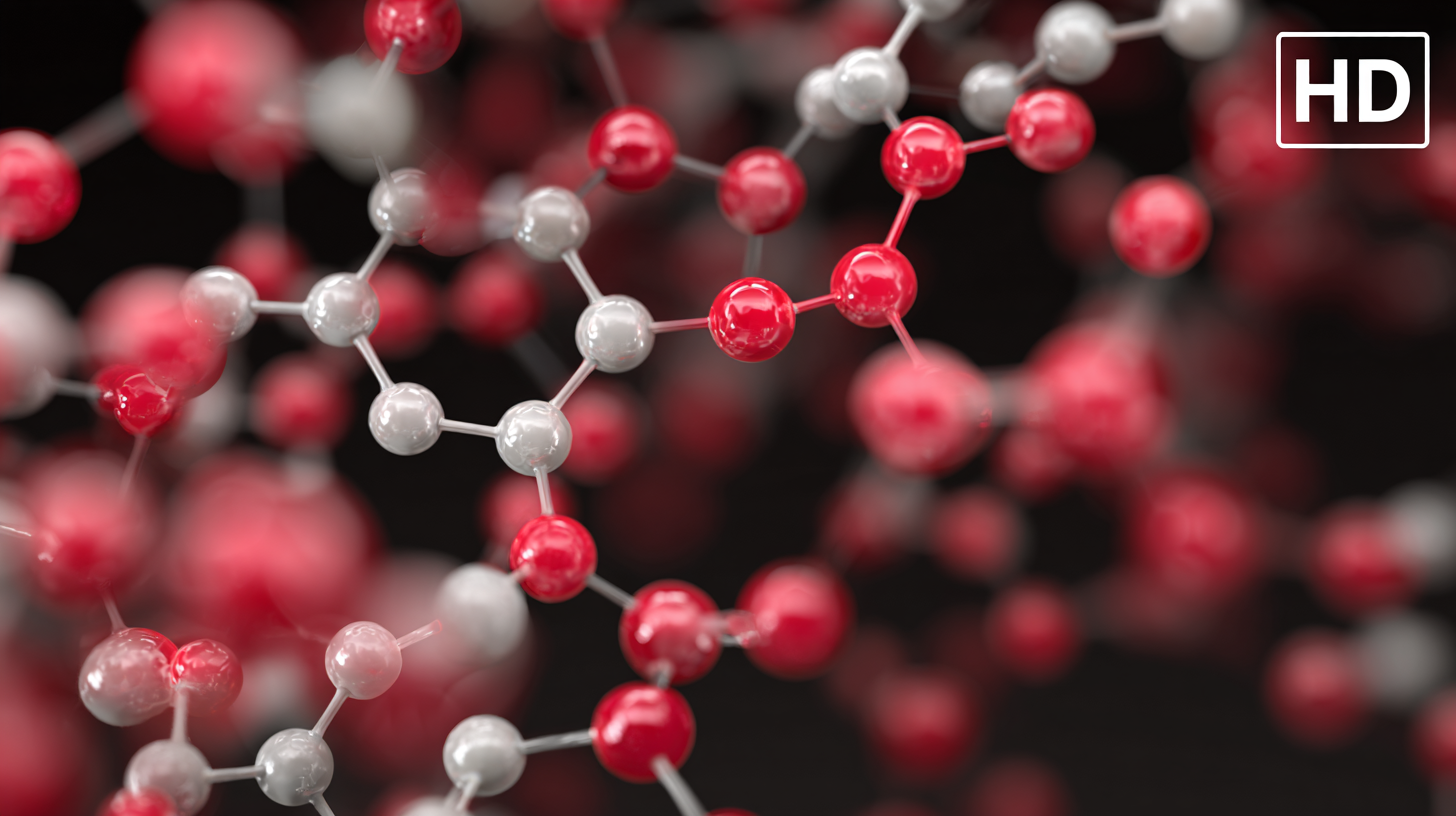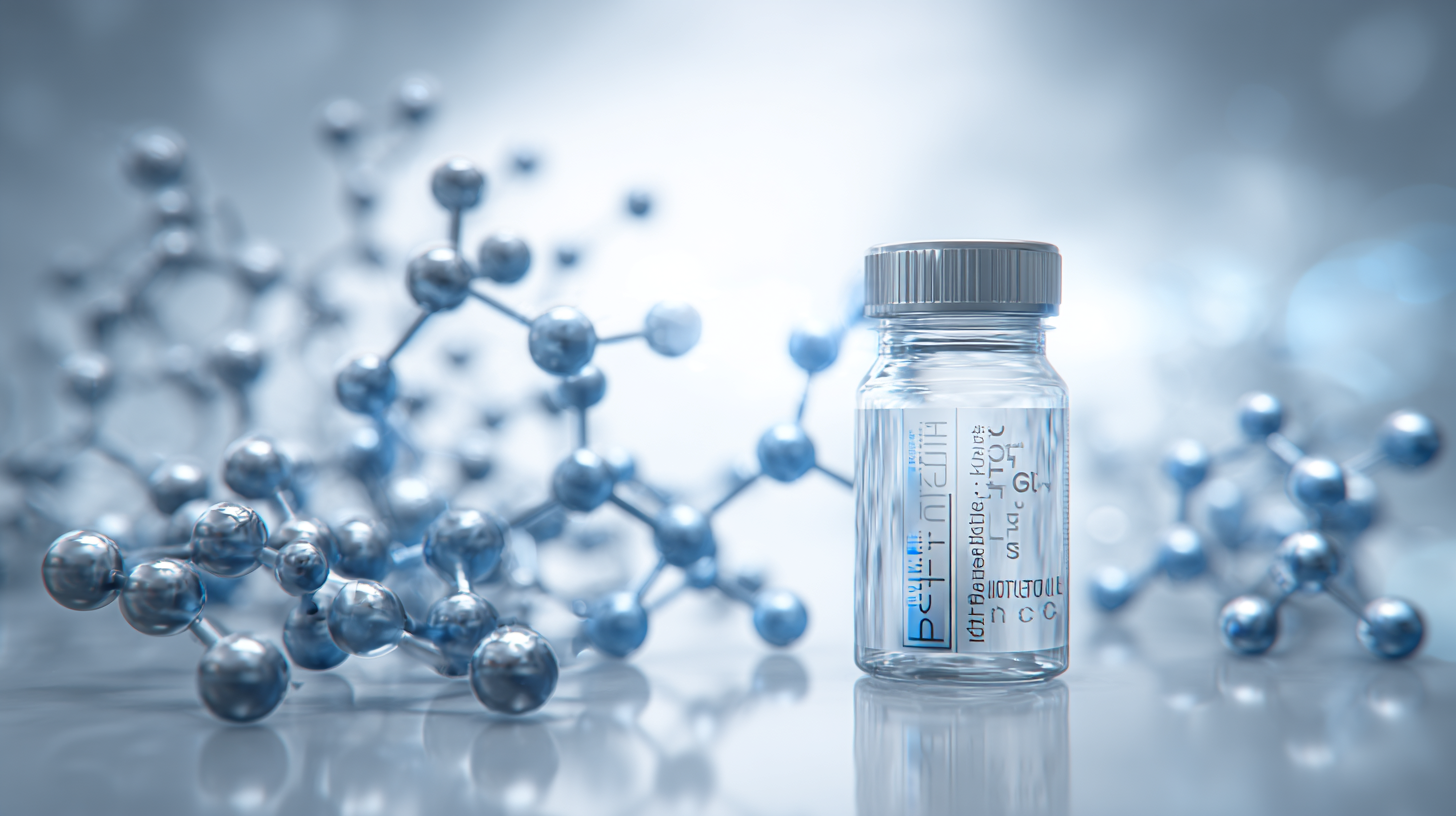
Issues Facing the Best Peptide Materials in Pharmaceutical Applications
In the rapidly evolving field of pharmaceuticals, Peptide Materials have emerged as pivotal components in drug development and therapeutic applications. With a market projected to reach $25.5 billion by 2025, the importance of optimizing these materials cannot be overstated. However, various challenges hinder their full potential, including issues related to stability, solubility, and scalability of production processes. According to a report by Research and Markets, 40% of peptide-based drugs in development face hurdles in achieving adequate bioavailability. As the demand for more effective and personalized medicine continues to rise, addressing these critical issues becomes essential for the successful integration of Peptide Materials in pharmaceutical practices. This blog will explore these challenges and provide a comprehensive checklist for researchers and industry experts to navigate the complexities of peptide utilization in their projects.

Challenges in Selecting Peptide Materials for Drug Formulations
In the pharmaceutical landscape, the selection of peptide materials for drug formulations poses significant challenges. According to the latest report by MarketsandMarkets, the global peptide therapeutics market is projected to reach over $55 billion by 2027, highlighting the growing reliance on peptides in drug development. However, the complexity of peptide synthesis and stability remains a critical obstacle. Peptides often exhibit low solubility and poor bioavailability, making it essential to tailor their formulations to enhance delivery and efficacy.
Another challenge lies in the regulatory requirements for peptide-based drugs, which can differ widely from conventional pharmaceuticals. As reported by the Pharmaceutical Research and Manufacturers of America (PhRMA), the development timeline for peptide drugs can extend beyond 10 years, primarily due to the rigorous evaluation of safety and efficacy. Furthermore, the scalability of peptide production techniques, such as solid-phase peptide synthesis (SPPS), raises concerns regarding cost and consistency. Ensuring high-quality peptide materials that meet stringent regulatory standards while maintaining cost-effectiveness is crucial for success in this rapidly evolving field.

Stability and Shelf Life Concerns of Peptide-Based Pharmaceuticals
The stability and shelf life of peptide-based pharmaceuticals are critical concerns for the pharmaceutical industry. Recent studies have shown that many peptides are susceptible to degradation under various environmental conditions, such as temperature, pH, and humidity. According to a report by the International Journal of Pharmaceutics, approximately 50-80% of peptides exhibit instability, leading to reduced efficacy and an increase in adverse effects when administered in clinical settings. This instability can significantly affect the formulations, requiring specialized storage conditions and complicating distribution logistics.
Additionally, the shelf life of peptide therapeutics often falls short compared to traditional small-molecule drugs. A survey conducted by the Peptide Therapeutics Foundation highlights that the average shelf life of popular peptide drugs is around 18 months, as opposed to the 24-36 months typical for conventional pharmaceuticals. This limitation necessitates ongoing investment in research to develop innovative stabilization techniques, such as lyophilization and the use of stabilizing excipients, which can extend the shelf life and enhance the overall viability of peptide therapies in the marketplace. As the demand for peptide-based treatments continues to rise, addressing these stability challenges will be essential to ensure patient safety and therapeutic effectiveness.
Innovations in Peptide Synthesis for Enhanced Therapeutic Efficacy
Innovations in peptide synthesis have dramatically transformed the landscape of pharmaceutical applications, addressing both therapeutic efficacy and stability concerns. Traditional methods of peptide synthesis, often hindered by low yields and lengthy production timelines, have evolved significantly with the advent of novel techniques such as solid-phase peptide synthesis (SPPS) and automated synthesizers. These innovations not only streamline the synthesis process but also enable the incorporation of non-natural amino acids and complex modifications that enhance the pharmacological properties of peptides.
Furthermore, advances in chemical engineering and biotechnology are paving the way for higher purity peptides through improved purification techniques such as ultrafiltration and high-performance liquid chromatography (HPLC). These refined methods help in minimizing impurities that can affect drug efficacy and safety. Additionally, the development of more efficient coupling agents and reagents has reduced side reactions, leading to a more predictable synthesis pathway. As researchers continue to explore these innovations, the future of peptide-based therapies promises to deliver more potent, targeted treatments, reshaping the potential for personalized medicine in combating a myriad of health conditions.

Regulatory Hurdles in the Approval of Peptide Therapies
The landscape of peptide therapy in pharmaceuticals faces significant regulatory hurdles that can delay innovation and accessibility. According to the Pharmaceutical Research and Manufacturers of America (PhRMA), nearly 70% of peptide therapies in clinical trials experience some form of regulatory setback during the approval process. These challenges arise from the complexity of peptide structures and the stringent guidelines set by agencies such as the FDA. Each unique peptide must undergo rigorous testing for safety, efficacy, and manufacturing consistency, a lengthy process that can take several years.
Tip: To navigate the regulatory maze more effectively, companies should invest in early-stage consultation with regulatory bodies. Understanding the specific requirements for peptide therapies can help streamline the approval process and reduce the risk of setbacks.
Moreover, global variations in regulatory standards can complicate the international development of peptide therapies. For example, the European Medicines Agency (EMA) and FDA have differing approaches regarding clinical trial designs and post-marketing requirements. A 2020 report from the International Society for Pharmaceutical Engineering (ISPE) highlighted that companies can save up to 25% time in development by aligning their trial protocols with the target market's regulations early on.
Tip: Cultivating an adaptive strategy that incorporates feedback from global regulatory agencies can significantly enhance compliance and expedite market entry for new peptide therapies.
Issues Facing the Best Peptide Materials in Pharmaceutical Applications - Regulatory Hurdles in the Approval of Peptide Therapies
| Issue | Description | Impact on Approval | Potential Solutions |
|---|---|---|---|
| Complexity of Peptide Structures | Peptides can have complex structures leading to challenges in their synthesis and characterization. | Delays due to extended characterization requirements. | Advancements in analytical methodologies for better characterization. |
| Regulatory Variability | Different regulatory agencies have varying requirements for peptide therapies. | Inconsistent approval timelines and uncertainty in regulatory paths. | International harmonization of regulatory guidelines. |
| Manufacturing Scalability | Scaling up production from lab to commercial stage can be challenging. | Potential shortages and supply chain issues can affect approval timelines. | Invest in scalable manufacturing technologies. |
| Stability and Shelf Life | Peptides may have stability issues, affecting their shelf life and efficacy. | Increased scrutiny from regulators regarding product stability. | Develop formulations that enhance peptide stability. |
| Intellectual Property Challenges | Peptide patents can be complex and difficult to navigate. | Delays in product development and approval due to IP disputes. | Engage in thorough patent landscape analysis early in development. |
Emerging Technologies to Overcome Peptide Delivery Challenges
Emerging technologies in peptide delivery are revolutionizing pharmaceutical applications. Traditional methods often face challenges such as enzymatic degradation, poor absorption, and targeted delivery. However, recent advancements are paving the way for more effective strategies. For instance, nanotechnology is being utilized to encapsulate peptides in nanoparticles, enhancing their stability and bioavailability. This method not only protects peptides from premature degradation but also facilitates their transport across cellular membranes.
Tips for researchers developing peptide therapeutics include considering the use of pegylation to extend peptide half-life and evaluating the incorporation of lipid-based carriers to enhance absorption. Additionally, leveraging bioengineering techniques to design peptides that are more amenable to oral delivery could significantly improve therapeutic outcomes.
Another innovative approach is the use of smart polymers that respond to physiological conditions. These polymers can release peptides in a controlled manner, ensuring that therapeutic levels are maintained for extended periods. Embracing these emerging technologies can lead to significant advancements in delivering peptides effectively and safely, potentially transforming patient outcomes in various therapeutic areas.
